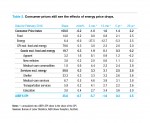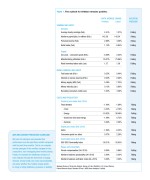Inflation
Scorecard
After price pressures firmed in January, the outlook for inflation remained positive in February. Of 23 indicators tracked in AIER’s Inflationary Pressures Scorecard, 13 show rising pressure, up from 12 in January, and 10 show falling pressure.
Strong supply factors are restraining inflation. Both industrial production and the retail inventory-to-sales ratio trended up, indicating more goods and services are available for sale, possibly pulling down prices. At the same time, demand has had a neutral impact on inflation.
On the money and credit front, the Fed’s tightening policy continued to reduce inflationary pressure, as rising short-term interest rates curbed price increases. The money supply, however, grew at a faster pace in recent months. This could indicate an enhanced incentive to borrow, if the public expects the Fed to raise rates again in the future.
The trends in producer prices were little changed in February, still supporting rising inflationary pressure. A strong U.S. dollar continued to curb the growth of import and commodity prices, but the effect has diminished somewhat from previous months.
Consumer Price Index Analysis
Overall consumer prices, measured by the Consumer Price Index, or CPI, fell 0.2 percent in February from January, mainly from a sharp drop in energy. After falling 2.8 percent in January, energy prices fell 6 percent in February. Over the previous three months, energy prices plummeted 37.5 percent at an annualized rate and were down 12.7 percent from a year earlier.
While energy prices have dragged down the CPI in recent months, that may be ending. The benchmark West Texas Intermediate crude oil price averaged $38.04 a barrel in March, about 25 percent higher than the February average, but the latest CPI data does not reflect that rise.
Despite energy declines in February, most consumer prices increased. The cost of food rose 0.2 percent after stalling in January. The core CPI, which excludes food and energy and gives a better long-term perspective, gained 0.3 percent from the previous month, an annualized 3 percent over the prior three months, and 2.3 percent over a year ago. All of these increases exceeded the Federal Reserve’s 2 percent inflation target.
Breaking down the core CPI, both core goods and services advanced 0.3 percent in February from January. Apparel rose 1.6 percent, the biggest monthly gain since March 2009 and the fastest growing of all the CPI components in February. The next largest monthly growth was in medical-care commodities, which climbed 0.6 percent from January.
Core services, which account for about 60 percent of all items in the CPI basket, rose 0.3 percent from January, 3.3 percent higher than three months earlier, and 3.1 percent over the prior 12 months. Core services prices trumped core goods over all periods tracked in Table 2.
Everyday Price Index
AIER’s Everyday Price Index fell 0.7 percent in February from January and dropped 1.6 percent over the previous 12 months. The EPI measures the change in prices that people encounter monthly in items such as groceries, gasoline, admission tickets, and restaurant meals.
The more widely known Consumer Price Index reported by the Bureau of Labor Statistics showed a seasonally unadjusted 0.1 percent increase in February from January and a 1 percent 12-month gain. Since the EPI is not seasonally adjusted, we compare it with the unadjusted CPI.
The drop in the EPI stemmed from falling energy-related prices. Motor fuel dropped 9.9 percent in February while household fuels and utilities declined by a more modest 0.2 percent. Excluding energy, everyday prices rose 0.1 percent. Because the EPI covers items that account for only about 35 percent of all consumer spending, energy-related price drops have a much larger effect on it than on the CPI.
Non-energy components of the EPI have risen in recent months. For instance, restaurant food prices have increased 2.6 percent over the past year, while admissions prices rose 3.6 percent. Everyday prices will likely move higher overall when energy prices stabilize.
Next/Previous Section:
1.Overview
2. Economy
3. Inflation
4. Policy
5. Investing
6. Pulling It All Together/Appendix


